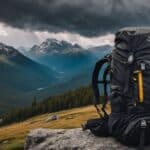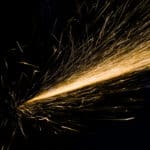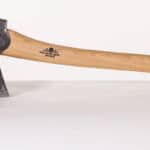Finding your way without GPS may seem tricky, but it’s all about going back to basics with traditional orientation skills. This method combines art, science, and a bit of intuition to guide the way using nature and some old-school tools.
Long before smartphones and satellites, people relied on the sun’s path, stars, landmarks, and even moss growth to find their direction. The earliest compass appeared in China around the 2nd century BCE, revolutionizing navigation for centuries to come.
Fast forward to today – these ancient techniques still offer valuable lessons in navigation. Whether it’s reading topographical maps or navigating by starlight using constellations like the Big Dipper as a guide, these skills empower adventurers to trek confidently through places like the Catskill Mountains without modern tech.
With examples set by expert navigators certified in Maine Guide certification solely through traditional methods – courtesy of Harold Gatty’s teachings – this journey into natural navigation showcases an important blend of knowledge.
Ready for an adventure? Let’s discover how to master these timeless skills.
Table of Contents
- The Basics of Navigation Without GPS
- Mastering Compass Navigation
- Map Navigation Skills
- Navigating by Natural Night Lights
- Utilizing Landmarks for Navigation
- Navigating Using the Sun
- Navigating by the Night Sky
- Leveraging Topographical Maps for Better Positioning
- Enhancing Navigation Skills with Natural Cues
- Can Traditional Orientation Skills Be Useful for Prepping Beginners?
- How can Traditional Orientation Skills help in Emergency Situations for Rescue and Communication?
- Conclusion
Learning to find your way without GPS starts with simple skills. You’ll use the sun, landmarks, and even stars to get around.
Using the sun and watches for direction
The sun rises in the east and sets in the west. This simple fact can guide us without a GPS. Here’s how to use the sun and watches for direction:
- Find south at noon. Place a stick in the ground where it makes a shadow. The tip of the shadow points north, giving you south, east, and west.
- Watch method for north-south line: Point the hour hand at the sun. Imagine a line halfway between the hour hand and 12 on your watch—this line points south in the northern hemisphere.
- Morning shadows are long; they shorten by noon and lengthen again as sunset approaches. This change helps estimate the time left before sunset.
- Sunrise and sunset offer clear east – west orientation. Watch where the sun rises or sets for these cardinal directions.
- Use your watch’s face as a makeshift compass if it’s analog—line up its hour hand with the sun; halfway between that point and twelve o’clock is roughly south.
- Pay attention to how shadows move during different seasons—they’re shorter in summer, longer in winter, affecting how you interpret them for direction.
With these tips, you can find your way using just the sun and a watch, turning every sunny day into a potential compass!
Recognizing landmarks
Landmarks are key in finding your way without GPS. Towering mountains, rivers, and unique buildings can serve as guides. You look at them to know where you are and where to go next.
This method works well in both cities and the wild. Hikers use notable rocks or trees as waypoints during their journey.
Maps often mark these important spots, helping connect what you see on paper with the real world around you. Using landmarks means less reliance on tech tools like compasses or phones.
Plus, it adds an extra layer of connection to the landscape through observation and memory skills.
Celestial bodies like the sun, moon, and stars have been guiding travelers long before GPS or compasses. The sun rises in the east and sets in the west, which is helpful for basic direction during the day.
At night, navigators look to constellations. The Big Dipper points to the North Star, a steady beacon in the northern sky. This method does not require any tools but knowledge of star patterns.
Next up is mastering how to use a compass effectively.
Learning to use a compass is key to finding your way. It helps you understand directions and guides you through unfamiliar paths.
Understanding azimuth
Azimuth is a way to talk about direction using degrees on a compass. Think of it as an angle that starts at north and wraps around clockwise. Zero degrees means north, 90 means east, 180 is south, and 270 points west.
This system helps people find their way by giving them precise directions instead of just saying “go straight” or “turn right.” You match the number you get with the compass needle to figure out where to go.
For example, if someone tells you that something is at a 45-degree azimuth from where you stand, you turn your compass dial until it reads 45 degrees. Then, move in the direction the compass needle points—that’s northeast.
This technique turns vague hints into clear steps toward your goal. With practice, using azimuths becomes second nature in getting from point A to B without a GPS. Now that we understand how azimuth works, let’s dive into reading topographical maps to develop better navigation skills.
Mastering map navigation skills opens up a world where a GPS doesn’t dictate your path. Reading maps correctly, you’ll find your way through wild and unknown areas with confidence.
Reading topographical maps
Topographical maps show hills, valleys, rivers, and other land features with contour lines. These lines help hikers understand the shape of the land. Closer lines mean steep hills; wider apart means flat land.
Each map also has grid numbers for finding your exact location.
Using a topo map requires knowing how to read these contour intervals and grid numbers. This skill helps in planning hikes and estimating travel time across different terrains. With practice, reading topographical maps becomes a valuable tool for outdoor adventures without relying on GPS.
Understanding contour lines and grid numbers
After getting to know how to read topo maps, let’s focus on contour lines and grid numbers. Contour lines show us how high the ground is and the shape of the land. Each line stands for a specific height above sea level.
Close lines mean steep hills or cliffs, while spaced-out lines suggest flat areas or gentle slopes. This tells hikers if they’ll climb a hill or cross a valley.
Grid numbers are like addresses on a map. They use coordinates to pinpoint exact spots. These numbers help with route planning by showing where you are and where you want to go. Knowing how to read these elements makes traditional orientation skills sharper.
It turns every outdoor adventure into a more informed journey, letting you connect with nature without relying solely on GPS technology.
The night sky is a map that never gets old. Stars guide the way for those who know how to read them. The North Star, found in the Little Dipper, stays close to true north. This makes it a reliable friend for finding direction after dark.
Travelers long ago would look up and use this star as their compass.
Other constellations like the Big Dipper also help in orientation during nighttime hikes or journeys across open waters. These natural night lights offer clues about our location on Earth without needing GPS or maps.
Learning their patterns can turn the fear of getting lost into an adventure under the stars, making every night a chance to navigate by celestial bodies with confidence.
Landmarks help us find our way; they’re like natural signs. Spotting unique features in the landscape keeps you on track.
The importance of recognizing landmarks
Recognizing landmarks helps us find our way in places without GPS. In cities, forests, and deserts, different markers show us where we are and which way to go. They’re key for moving through unknown areas.
Landmarks guide travelers, letting them track progress on their journey.
Maps with topographical features use these landmarks for precise navigation. By spotting a landmark and checking a map, travelers can figure out their location and plan their next steps.
This skill is crucial for stealth campers or anyone exploring the outdoors far from technology’s reach.
The sun tells us direction, with its rise in the east and set in the west. This basic knowledge helps us find our way without a GPS.
Sunlight guides travelers during the day. It rises in the east and sets in the west, a fact used by Harold Gatty and other natural navigators to find their way. This simple rule helps determine direction without needing a compass or GPS.
Knowing where the sun is at different times can aid in staying on course.
For those aiming for Maine Guide certification, mastering this skill is key. It not only shows an understanding of traditional methods but also proves one can navigate using nature’s signs.
Next, we’ll explore how night skies guide us with constellations like the Big Dipper.
Looking up, the Big Dipper guides you at night—learn more.
Using the Big Dipper as a celestial guide
The Big Dipper is a key tool for finding north. Look at the edge of its bowl. These two stars point to the North Star. From there, you can figure out true north. This method works well because the Big Dipper and the North Star are night sky landmarks.
Learning to use these celestial bodies enhances traditional orientation skills. Observing their positions helps in outdoor navigation without GPS or compasses. It’s a reliable way to guide yourself at night, making use of natural indicators above us.
Leveraging Topographical Maps for Better Positioning
Topographical maps show hills, valleys, and rivers — perfect for pinpointing your location. They help hikers find their way through tricky trails with precision.
Using topographical maps for precision
Topographical maps are key for precise positioning. They show hills, valleys, rivers, and other land features with contour lines. These lines help you understand how steep or flat an area is.
With this knowledge, hikers can choose the best path on a trail or find their way in unfamiliar terrain.
These maps also have grid numbers for pinpointing exact locations using latitude and longitude. This makes it easier to plan routes or locate yourself if lost. Using topographical maps, along with a compass, enhances your ability to move straight and avoid walking in circles—a common issue without visual landmarks.
To boost your way-finding skills, pay attention to natural signs. Trees, wind patterns, and even animal tracks can guide you straight through the wilderness.
Straight-line navigation is key in the wilderness. It helps you chart new paths and make sure you get back before dark. Using the sun, landmarks, and natural cues like moss on trees can guide your way straight.
This method saves time and keeps you safe in unknown areas.
The Rule of Up uses the sun to find direction for straight navigation. Knowing which way is north with moss or where ginseng grows can help, too. These skills are important for hiking without GPS, making sure every step takes you closer to your goal, not further away.
Can Traditional Orientation Skills Be Useful for Prepping Beginners?
For those looking to start prepping, traditional orientation skills can be incredibly useful. Learning how to navigate using a map and compass, finding water sources, and building shelters are all essential for beginners. These skills help develop resourcefulness and self-reliance, making them a valuable asset for preppers.
How can Traditional Orientation Skills help in Emergency Situations for Rescue and Communication?
In emergency situations, traditional orientation skills can be vital for rescue and communication. Also, knowing how to use emergency signaling techniques such as smoke signals, Morse code, or hand signals can help to attract attention and convey important messages to rescuers or other individuals in need of assistance.
Conclusion
Mastering traditional orientation skills opens up a new world outdoors. You learn to read the sun, stars, and land around you. It’s not just about getting from point A to B—it’s an adventure.
This knowledge can save you when tech fails, or batteries die. Exploring with these ancient skills brings confidence and a deeper bond with nature.







Leave a Reply